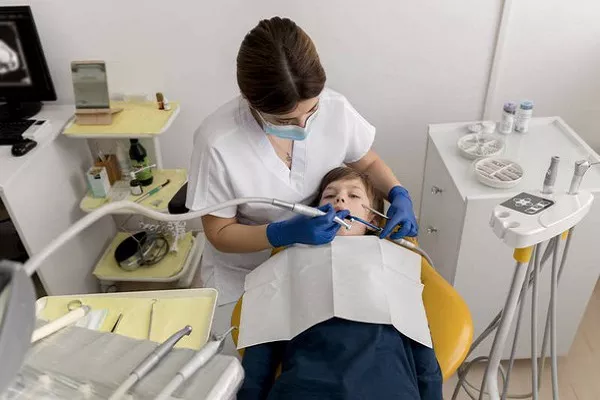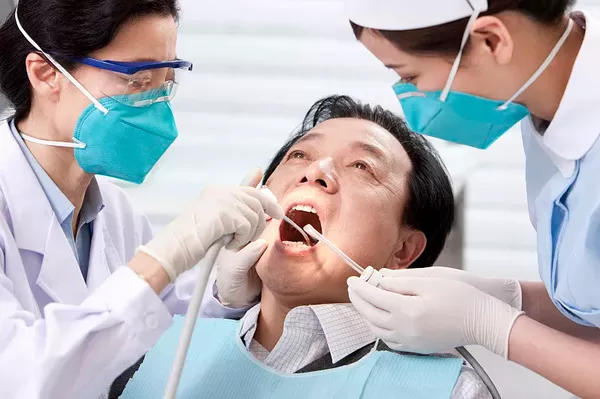Orthodontic retainers are an essential part of orthodontic treatment, designed to maintain the new alignment of teeth after braces or other orthodontic appliances have been removed. While retainers play a crucial role in preserving the results of orthodontic treatment, some patients may experience discomfort or soreness when wearing them. In this article, we will explore the reasons why orthodontic retainers can cause discomfort, ways to manage the pain, and tips for ensuring a smoother retainer experience.
Understanding Orthodontic Retainers:
Orthodontic retainers are dental appliances that are typically used after orthodontic treatment, such as braces or aligners, to maintain the alignment of teeth and prevent them from shifting back to their original positions. They help stabilize the teeth in their new corrected positions while the surrounding bone and tissues adjust.
Types of Retainers: There are mainly two types of retainers: removable retainers and fixed retainers.
Removable Retainers: These retainers can be taken out of the mouth for cleaning and eating. The most common type is a clear plastic retainer that fits over the teeth. Another type is the Hawley retainer, which has a plastic base and wire that goes across the front side of the teeth.
Fixed Retainers: Also known as bonded or permanent retainers, these are thin wires that are attached to the backside of the teeth using dental cement. They are not removable by the patient and provide continuous support to the aligned teeth.
Purpose of Retainers: The primary purpose of retainers is to hold the teeth in their corrected positions until the surrounding bones and gums stabilize. Teeth have a natural tendency to shift back to their original positions, and wearing retainers helps prevent this relapse.
Usage and Duration: Initially, retainers are typically worn full-time, both during the day and night, immediately after orthodontic treatment. After a few months, the wear time may be reduced to only nighttime. The duration of retainer use varies depending on individual cases, but it often extends for several months to a year or more. In some cases, lifelong retainer use may be recommended to ensure long-term stability.
Care and Maintenance: Proper care of retainers is essential to maintain their effectiveness and hygiene.Removable retainers should be removed before eating and cleaned using a toothbrush and mild soap or non-abrasive denture cleaner. They should be stored in a proper retainer case when not in use.Fixed retainers can be brushed and flossed like natural teeth, but special attention is required to clean the area around the wire.
Follow-up with Orthodontist: Regular follow-up visits with the orthodontist are necessary during the retention phase. The orthodontist will monitor the progress, make adjustments if needed, and ensure that the retainers are fitting properly.
Replacement and Repair: Retainers may need to be replaced or repaired if they become damaged, lose their fit, or wear out over time. It’s important to contact your orthodontist if you experience any issues with your retainers.
Why Orthodontic Retainers Hurt:
Orthodontic retainers may cause discomfort or pain for various reasons. Here are a few common reasons why orthodontic retainers might be uncomfortable:
Adjustment Period: When you first start wearing a retainer or after getting a new one, there may be an adjustment period during which your mouth and teeth need time to adapt. This can cause mild soreness or discomfort.
Pressure on Teeth: Retainers apply gentle pressure to keep your teeth in their new positions. Sometimes, this pressure can cause temporary discomfort, especially if the retainer is tight or if it needs adjustments.
Gum Irritation: Certain parts of the retainer, such as wires or plastic edges, might rub against your gums and cause irritation or sore spots. This can be addressed by adjusting the retainer or using orthodontic wax to provide a protective barrier.
Shifts in Tooth Alignment: If you don’t wear your retainer consistently, it can lead to shifts in tooth alignment. When you resume wearing the retainer, it may need to exert additional pressure on your teeth to move them back into their proper positions, which can cause discomfort.
Allergies or Sensitivities: In rare cases, some individuals may be allergic or sensitive to the materials used in their retainers, such as certain metals or plastics. This can result in discomfort or allergic reactions.
Pressure on Teeth:
Retainers apply slight pressure to the teeth to keep them in place. This pressure may cause soreness or discomfort, especially in the first few days of wearing the retainer.
Soft Tissue Irritation:
Some patients may experience irritation or sore spots on the gums, cheeks, or tongue as they adapt to the presence of the retainer in their mouth.
Tightening or Adjustments:
For patients with removable retainers, periodic adjustments may be necessary to maintain the teeth’s alignment. These adjustments can cause temporary discomfort.
Tips for Managing Retainer Discomfort:
Follow the Orthodontist’s Instructions:
It is essential to follow the orthodontist’s instructions regarding retainer wear. Consistency in wearing the retainer as prescribed will help minimize discomfort and ensure the best treatment outcome.
Gradual Wear:
In the beginning, patients can gradually increase the amount of time they wear the retainer each day. This helps the mouth and teeth adjust more comfortably to the retainer.
Over-the-Counter Pain Relievers:
Over-the-counter pain relievers, such as ibuprofen or acetaminophen, can help manage any discomfort or soreness associated with wearing the retainer.
Orthodontic Wax:
If the retainer is causing irritation to the soft tissues, orthodontic wax can be applied to the areas that are rubbing against the cheeks, gums, or tongue.
Proper Cleaning:
Keeping the retainer clean is essential for oral hygiene and can contribute to overall comfort. Clean the retainer as instructed by the orthodontist to prevent the buildup of bacteria.
Stay Hydrated:
Drinking plenty of water can help alleviate dry mouth and reduce discomfort while wearing the retainer.
Avoid Hard or Sticky Foods:
During the initial adjustment period, it is advisable to avoid hard or sticky foods that may put extra pressure on the teeth and cause discomfort.
Regular Check-ups:
Attend scheduled follow-up appointments with the orthodontist to ensure that the retainer fits correctly and to address any concerns.
Conclusion:
Orthodontic retainers are a crucial part of maintaining the results achieved through orthodontic treatment. While it is common for patients to experience some discomfort when wearing retainers initially, this discomfort typically subsides as the mouth and teeth adapt to the retainer’s presence. Following the orthodontist’s instructions, gradually increasing retainer wear, and managing any soreness with over-the-counter pain relievers or orthodontic wax can help ease the transition. Proper retainer care and regular check-ups will ensure a more comfortable and successful retainer experience. If discomfort persists or becomes severe, patients should promptly contact their orthodontist for evaluation and adjustment of the retainer as needed. With patience and proper care, orthodontic retainers can maintain a beautifully aligned smile for years to come.
Related Topics:




























